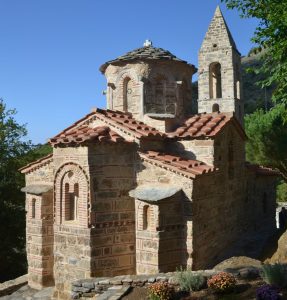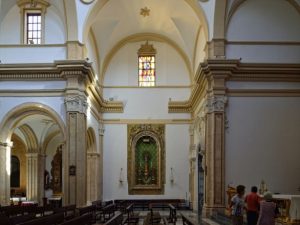The European Commission and Europa Nostra have revealed the winners of the 2016 European Union Prize for Cultural Heritage / Europa Nostra Awards, Europe’s highest honour in the heritage field. Religious sites in Greece, Portugal and Spain are among the 28 initiatives awarded.
The 28 laureates from 16 countries have been recognised for their exemplary achievements in conservation, research, dedicated service, and education, training and awareness-raising.
Citizens from around the world can vote online for the Public Choice Award.
In 2015 The Churches Conservation Trust, one of the FRH founding members, was declared a Grand Prix laureate at the European Union Prize for Cultural Heritage / Europa Nostra Awards 2015 and the Jury appreciated “the tremendously significant role the Trust has played in the foundation of the Future of Religious Heritage Network.”
FRH is pleased that this year there are again religious projects among the nominees. All FRH members can vote online and mobilise support for the award-winning project(s) from their own or another European country.

Cathedral and Diocesan Museum in Santarém, PORTUGAL
Portugal
The Cathedral of Santarém and the adjoining Diocesan Museum, located in the centre of Portugal, underwent a significant and comprehensive conservation project from 2012 to 2014. This included the restoration of the architecture of the cathedral, the movable and integrated decoration both inside and on the cathedral’s facade as well as the rehabilitation of the museum which houses a collection of religious art. Read more

The 12th century Byzantine church of St. Peter in the village of Kastania
Greece
The church of St. Peter is the oldest of the ten Byzantine monuments in the village of Kastania. It is a cross-in-square domed structure of the late 12th century, with a portico added to the west side in the 13th century and a bell tower which was constructed in 1813. The church was in a poor state before the work began and faced serious structural problems due to weather exposure, inherent weaknesses and inappropriate past interventions. The interior decoration of an exquisite programme of Byzantine frescoes had also suffered greatly over the church’s 800-year lifespan.
The high quality restoration of the church included the securing of the building’s structural issues and the conservation of the interior decoration. The care which went into every aspect of the work is remarkable. Read more

Six Churches in Lorca, Murcia, SPAIN
Spain
In May 2011, Lorca experienced an earthquake which caused serious damage across the city. Among the buildings damaged were six churches located in the historic centre of the city. These buildings are examples of various architectural styles, Renaissance, Murcian Baroque and Neoclassical. Fissures were apparent in the roofs and walls of several of the churches while some roofs had collapsed altogether. Though the citizens of Lorca were naturally discouraged following the disaster and the harm caused to so many of their churches, as well as the destruction of many other iconic buildings, they soon assembled their resources and worked to restore their city to its former state.
The renovation works took just four years to complete. For a project of this size, this is an incredible accomplishment. Read more





Follow us: